महाराष्ट्र निसर्ग उद्यानाची भूमी म्हणजे मुंबई शहराची एकेकाळची क्षेपण भूमी. त्यावर विविध प्रकारच्या सरीसृपांचे वास्तव्य आधी पासूनच होते. क्षेपण भूमीवरील उंदीर हे ह्या सापांचे खाद्य होते. ह्या क्षेपण भूमीवर लावण्यांत आलेल्या झाडांच्या वाढी बरोबरच हे मानव निर्मित वन वाढू लागले व ह्या सर्व सरिसृपांना जगण्यासाठीचा आधार मिळाला. आसपासच्या तिवरांच्या जंगलातील काही सरिसृप इथे आश्रयाला आले तसेच शहरातून पकडण्यांत आलेल्या काही सापांना इथे पुनर्वासीत करण्यात आले. अन्नाची व निवाऱ्याची उपलब्धता प्राप्त झाल्याने अशा सर्वच प्रकारच्या सरीसृपांनी आता इथे आपले चांगलेच बस्तान बसवले आहे.
तुषार जी. शिंदे
संचालक
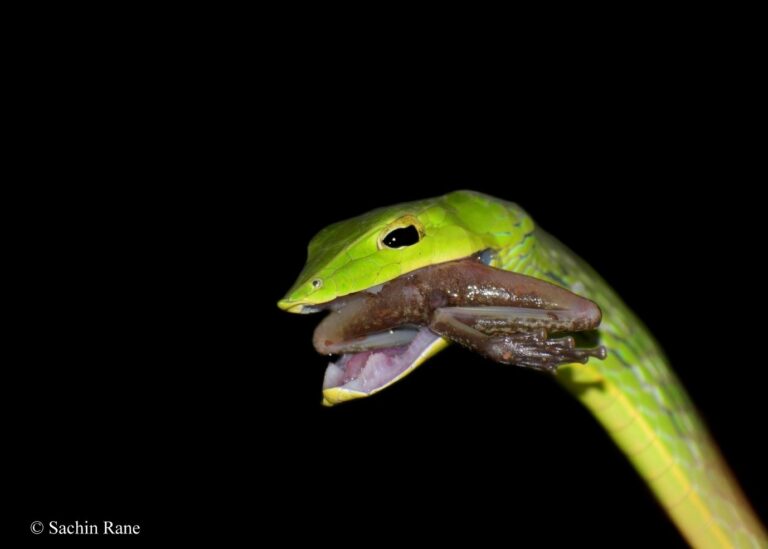
Photographer: Sachin Rane
Green vine snake
- Marathi name: Harantol
- Distribution: All over India except in the Northwest and much of the Gangetic basin.
- Habitat: Bushes and trees in forests, coastal areas, paddy fields.
- Food: Small birds, eggs, hatchlings. It is also eats lizards and frogs.
- Characteristics: Diurnal.
- Semi-Venomous

Photographer: Sachin Rane
Bamboo pit viper
- Marathi name: Chapda
- Distribution: Western and Eastern Ghats.
- Habitat: Commonly found in dense forests.
- Food: mainly mice, small birds, lizards and even small mammals.
- Characteristics: It is active by night
- Venomous

Photographer: Daimler Pereira
Malabar pit viper
- Marathi name: Malabari Chapada.
- Distribution: Found in the hills of the Western Ghats.
- Habitat: Prefer high elevations with dense forests near streams. Found on the ground, rocks and low vegetation.
- Food: Primarily feed on Frogs, Lizards, small Birds and Mice
- Characteristics: Nocturnal
- Venomous
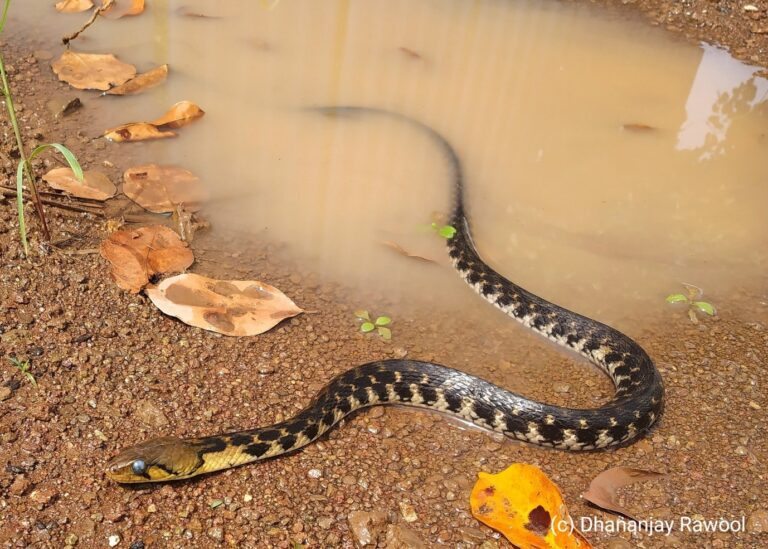
Photographer: Dhananjay Rawool
Checkered keelback
- Marathi name: Divad.
- Distribution: Throughout India except the Andaman & Nicobar Islands.
- Habitat: Rivers, lakes and ponds.
- Food: Fish, frogs, toads; while juveniles eat tadpoles.
- Characteristics: Diurnal as well as nocturnal.
- Non-venomous
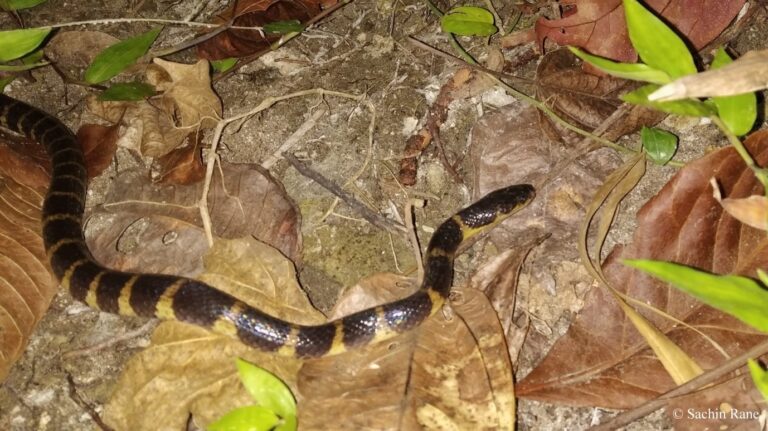
Photographer: Sachin Rane
South Andaman Krait.
- Marathi name: Andaman Manyar.
- Distribution: Found only in Andaman and Little Andaman Islands.
- Habitat: in pits filled with water, Rat burrow near the water surface, Grain warehouse, in bushes.
- Food: Feeds on other snakes and probably rodents too.
- Characteristics: Nocturnal.
- Venomous.
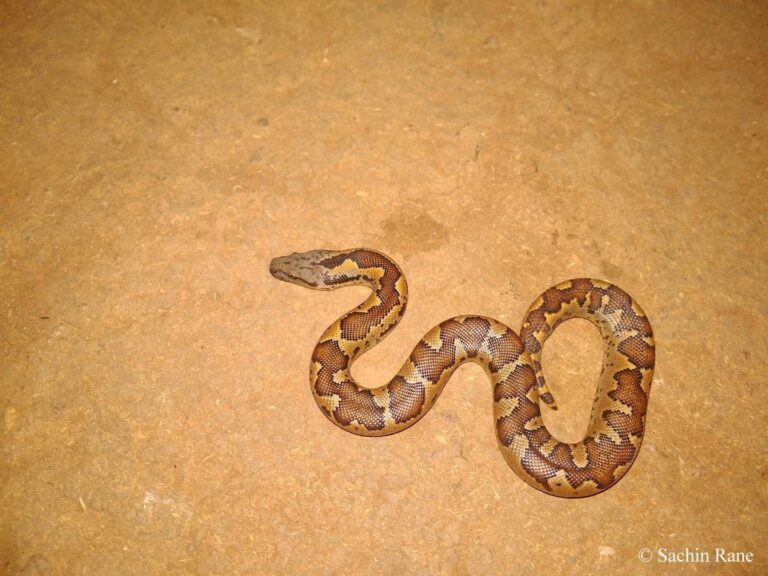
Photographer: Sachin Rane
Rough scaled sand boa or Russell’s boa
- Marathi name: Durkya ghonas.
- Distribution: Widespread throughout peninsular India.Not found northeast of Bengal.
- Habitat: In dry, sandy areas, scrub jungles and rocky terrain of central & southern India.
- Food: Feeds on Rodents, geckos and small birds.
- Characteristics: Nocturnal
- Non-Venomous
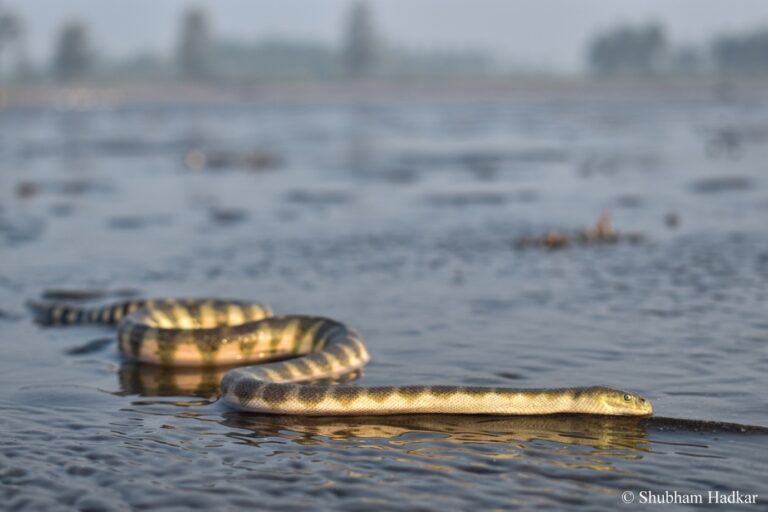
Photographer: Shubam Hadkar
Hook nosed Sea snake
- Marathi name: Samudra Sarp
- Distribution: Indian coastline.
- Habitat: Seen along the coastline, in gulfs, brackish water and estuaries.
- Food: feeds mainly on fish
- Characteristics: Diurnal as well as nocturnal
- Venomous
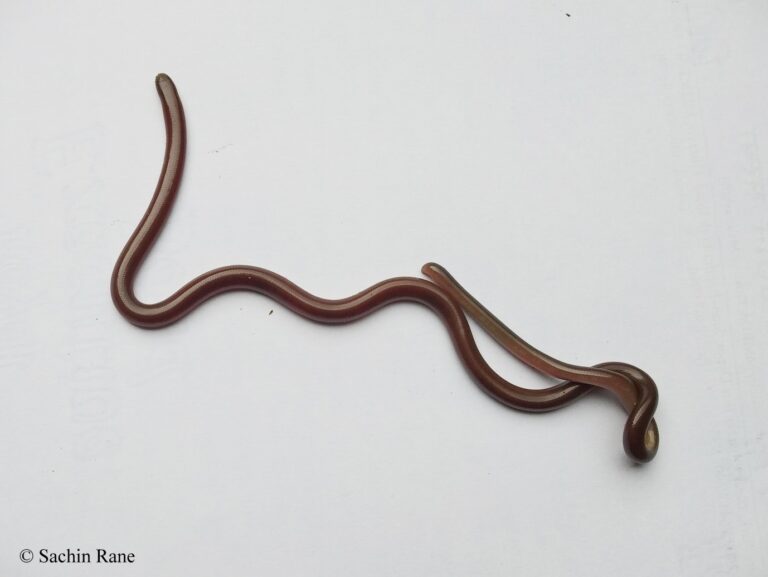
Photographer: Sachin Rane
Brahminy blind snake
- Marathi name: Vala
- Distribution: Native to India & Sri-Lanka.
- Habitat: Inhabit all kinds of habitats. Microhabitat has loose, moist soil with plenty of gaps & loose roots.
- Food: Their diet consists of the larvae, eggs, and pupae of ants and termites.
- Non-Venomous

Photographer: Shubam Hadkar
Glossy Marsh Snake
- Marathi name: Zilan
- Distribution: Indian coastline.
- Habitat: coastal areas, mangroves and estuaries.
- Food: mostly fish, shrimps, soft-shelled crabs and snails.
- Characteristics: Nocturnal, sometimes seen in the daytime.
- Semi-Venomous
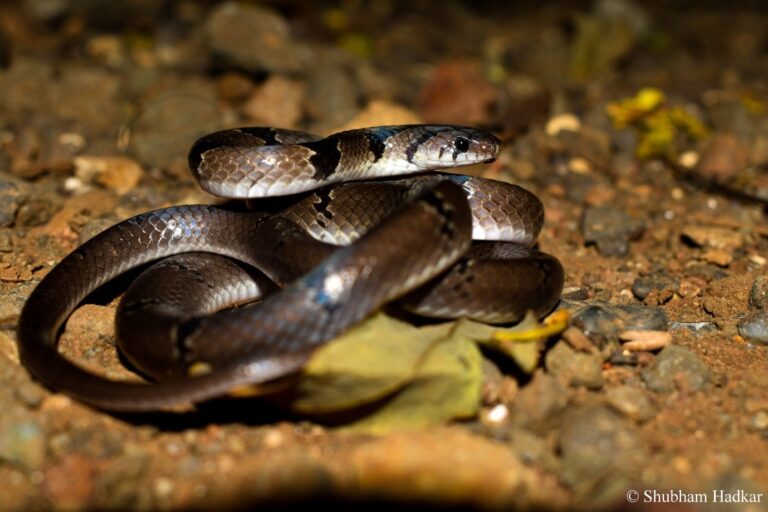
Photographer: Shubam Hadkar
Banded Kukri
- Marathi name: Kukri sarp
- Distribution: All over India excluding Kashmir and North East India.
- Habitat: dense forests, open forests, rocky terrain and human habitations. Found near dense vegetation with loose soil, rocky areas & wetness
- Food: small lizards, insects & particularly fond of reptile eggs.
- Characteristics: Shy, normally does not bite.
- Non-Venomous.
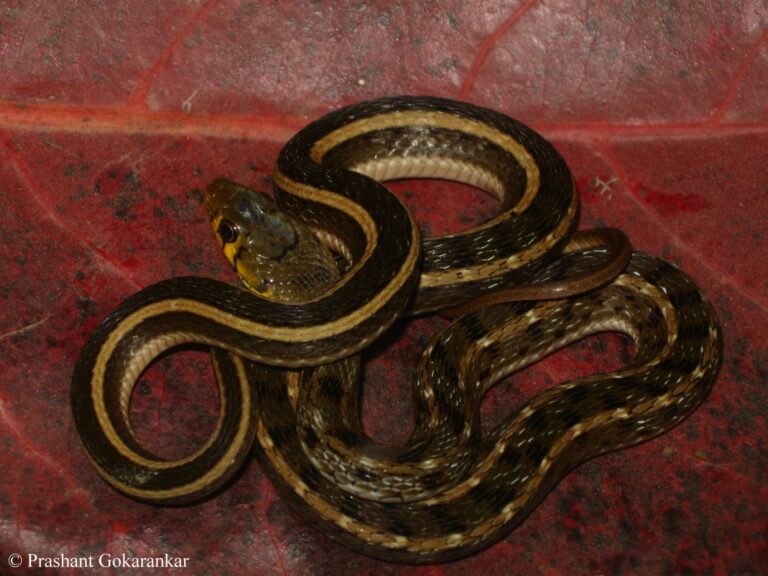
Photographer: Prashant Gokarankar
Striped keelback
- Marathi name: Naneti
- Distribution: Common and widespread throughout India.
- Habitat: moist vegetation, ponds, leaf litter, cracks and thick grass.
- Food: Feed on frogs, toads, sometimes lizards and small rodents.
- Characteristics: Diurnal snakes and sleep in the night under rocks, holes, bushes.
- Venomous

Photographer: Daimler Pereira
Saw-scaled viper
- Marathi name: Phurse
- Distribution: All over India except Kashmir, West Bengal and the North East Indian states.
- Habitat: Commonly found along the coast and in the Sahyadris. Seen in paddy fields and arid, rocky areas.
- Food: Scorpions, centipedes, geckos, skinks, frogs and small mice.
- Characteristics: Diurnal and nocturnal.
- Venomous
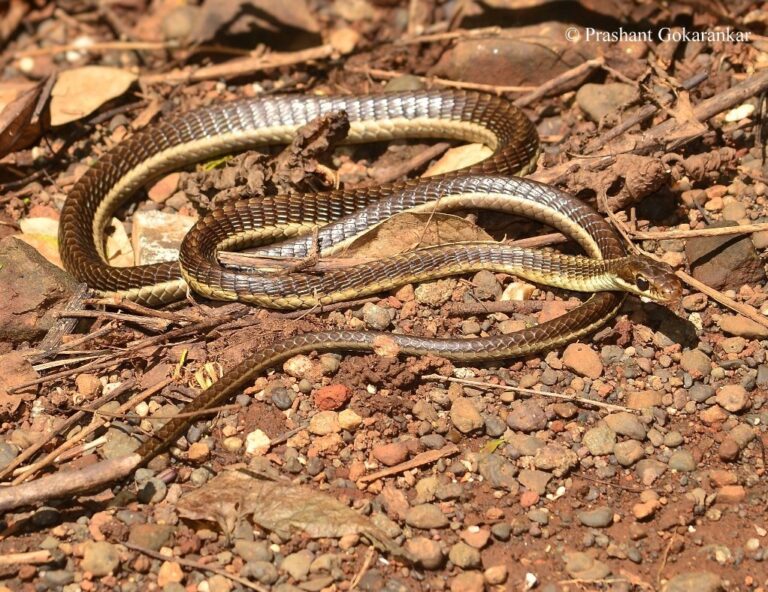
Photographer: Prashant Gokarankar
Bronzeback tree snake
- Marathi name: Ruka Sarp
- Distribution: Peninsular India.
- Habitat: Coastal forests as well as dry scrub areas, Western Ghats.
- Food: Frogs, lizards, garden lizards and birds.
- Characteristics: Diurnal.
- Non-Venomous

Photographer: Mrunal Gosavi
Wolf snake
- Marathi name: Kavdya Sarp.
- Distribution: All over India except in Kashmir.
- Habitat: Forests, coastal areas, paddy fields, arid regions as well as rocky outcrops.
- Food: Geckos and occasionally skinks and frogs.
- Characteristics: Nocturnal.
- Non-Venomous.
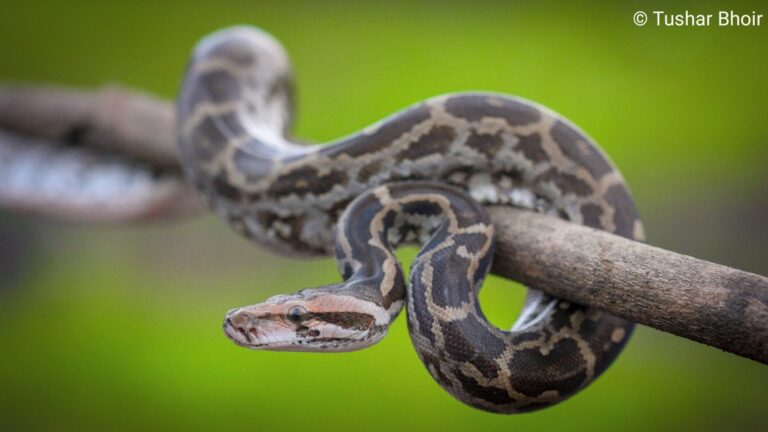
Photographer: Tushar Bhoir
Indian Rock Python
- Marathi name: Ajgar
- Distribution: All over India
- Habitat: Variety of habitats ranging from dense forests to open areas like paddy fields and scrubland, rocky areas near water bodies and marshy areas.
- Food: Small mammals like rats and bandicoots to deer, monkeys, dogs, jackals, etc.
- Characteristics: Mainly nocturnal and can stay under water for up to 30 minutes.

Photographer: Prashant Gokarankar
Spectacled Cobra
- Marathi name: Nag
- Distribution: All over India.
- Habitat: Forests, grasslands, paddy fields, urban areas, around villages. It also resides in anthills and old houses.
- Food: Toads, frogs, mice, small birds and occasionally small snakes.
- Characteristics: It is both diurnal as well as nocturnal. When
- Venomous
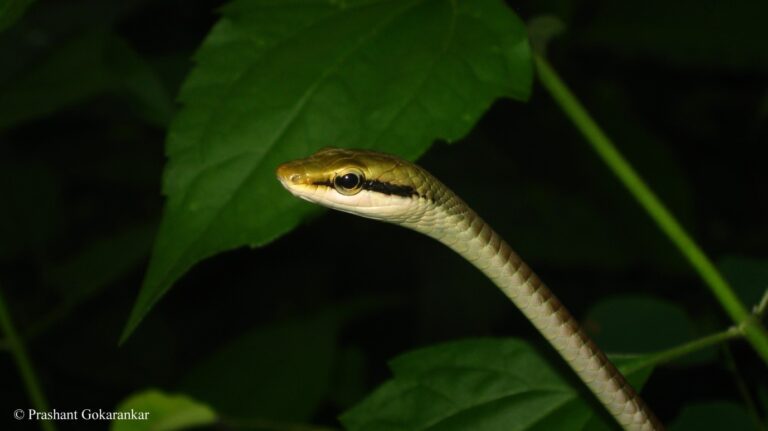
Photographer: Prashant Gokarankar
Giri’s Bronzeback tree snake
- Distribution: Inhabits the Western Ghats, South India..
- Habitat: Forest
- Food: Feeds on lizards, frogs and small rodents.
- Characteristics: Diurnal
- Non-Venomous.
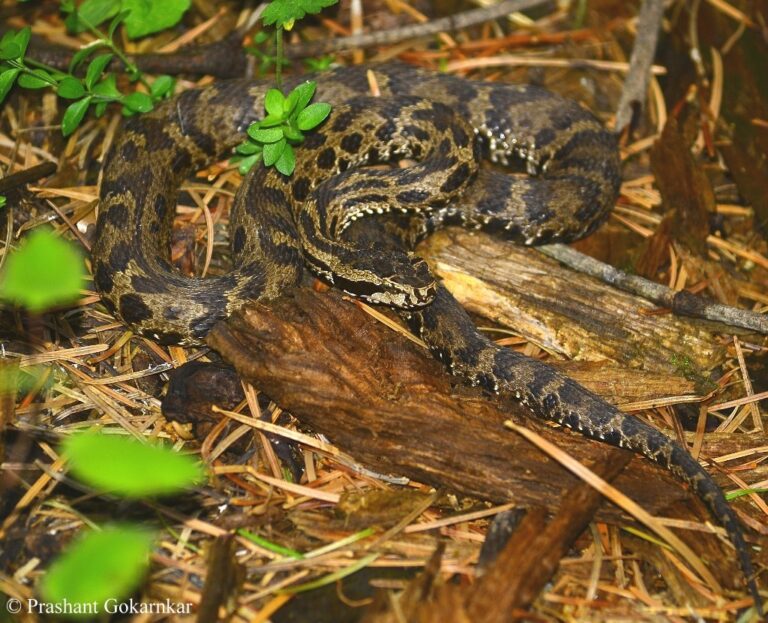
Photographer: Prashant Gokarankar
Western Himalayan Pit Viper
- Marathi name: Himalayan Pit Viper
- Distribution: Himalayasfrom northern India (Kashmir, Punjab) and Nepal.
- Habitat: It takes refuge under fallen timber, crevices, in or under rocks, beneath boulders, ledges, stones and fallen leaves
- Food: Its food consists mostly of millipedes, centipedes, and small rodents.
- Characteristics: Nocturnal
- Venomous
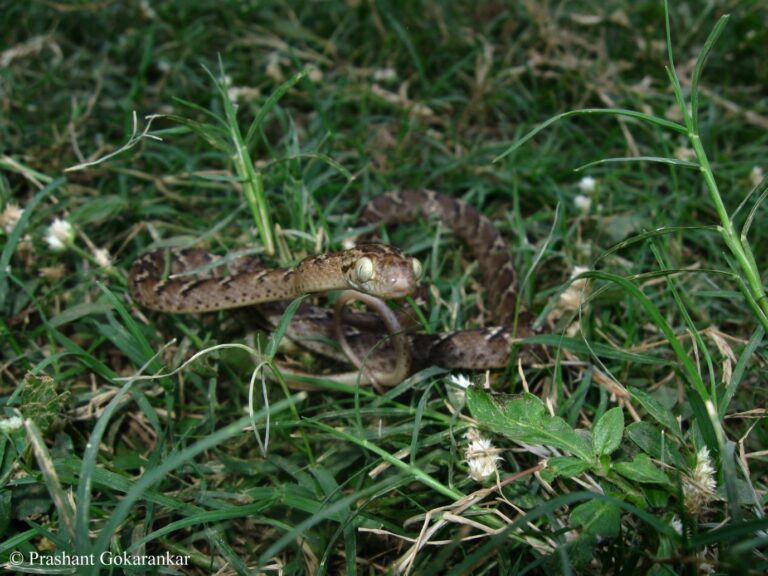
Photographer: Prashant Gokarankar
Common Indian Cat Snake
- Marathi name: Manjrya Sarp
- Distribution: Indian Subcontinent.
- Habitat: Inhabit dense forests, open forests, rocky hills & scrub jungles too.
- Food: Mainly feed on geckos but also small birds and frogs.
- Characteristics: Nocturnal & Arboreal.
- Semi-Venomous.
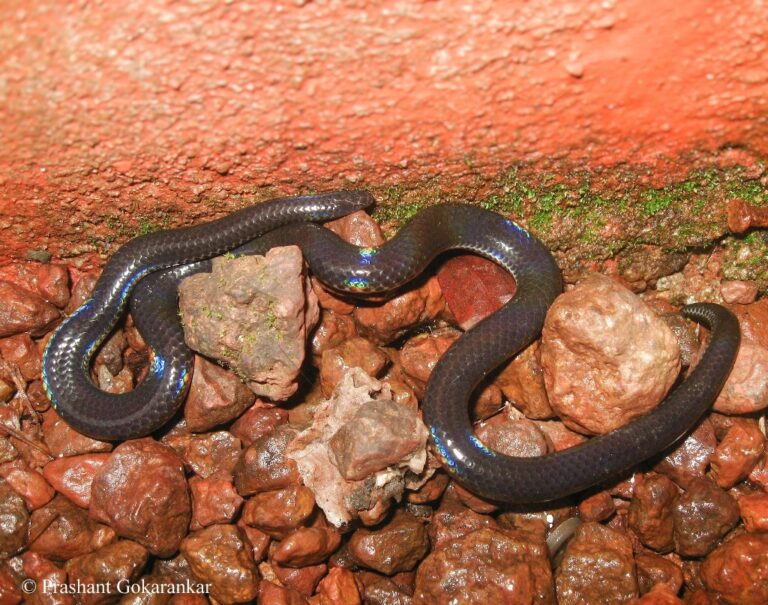
Photographer: Prashant Gokarankar
Khaire’s Black Shieldtail
- Marathi name: Khaire’s black shieldtail.
- Distribution: Western Ghats
- Habitat: It is a highly iridescent burrowing snake that inhabits evergreen forests and is rarely seen above ground
- Food:
- Characteristics: Nocturnal
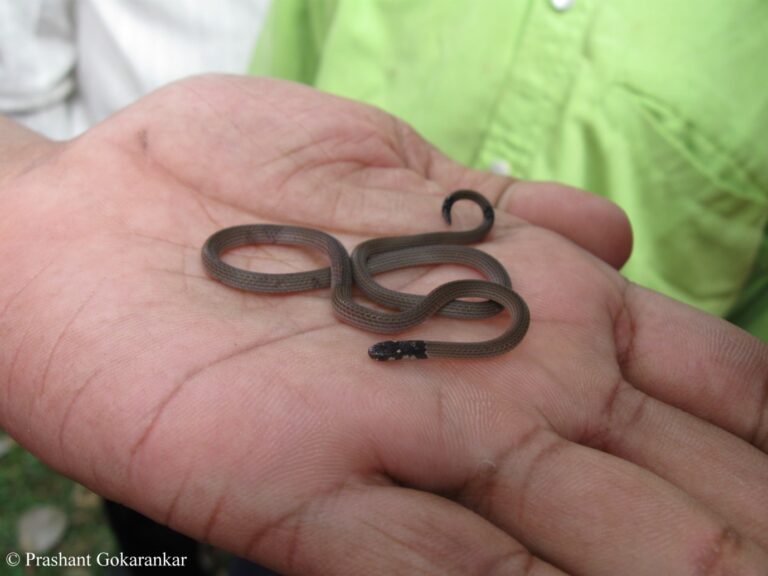
Photographer: Prashant Gokarankar
Slender Coral Snake
- Marathi name: Powala, Raat Sarp
- Distribution: Maharashtra, Gujarat, West Bengal, Karnataka, Tamil Nadu
- Habitat: Mostly on land, under stones and dry leaves.
- Food: Has been recorded to feed on Worm Snakes in captivity.
- Characteristics: Nocturnal.
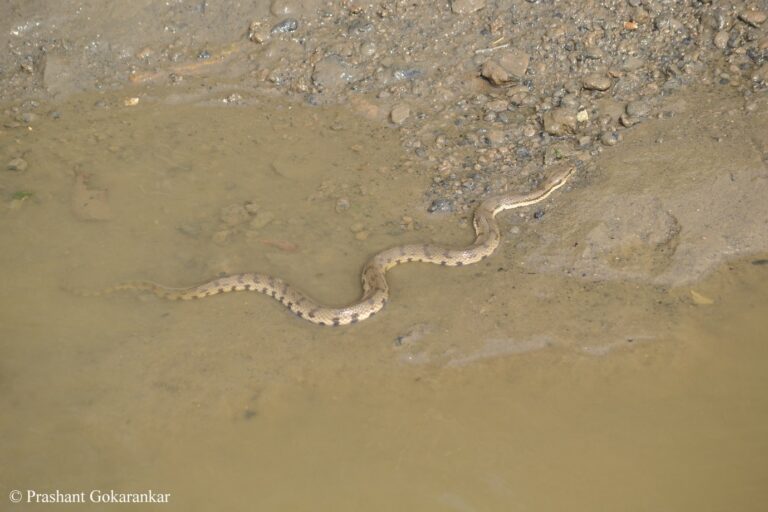
Photographer: Prashant Gokarankar
Dog-faced water Snake
- Marathi name: Shwanmukhi Sarp.
- Distribution: Indian coastline including the Andaman & Nicobar Islands.
- Habitat: Crab holes and sometimes found in paddy fields.
- Food: Fish, frogs and small crabs.
- Characteristics:
- Semi-Venomous.
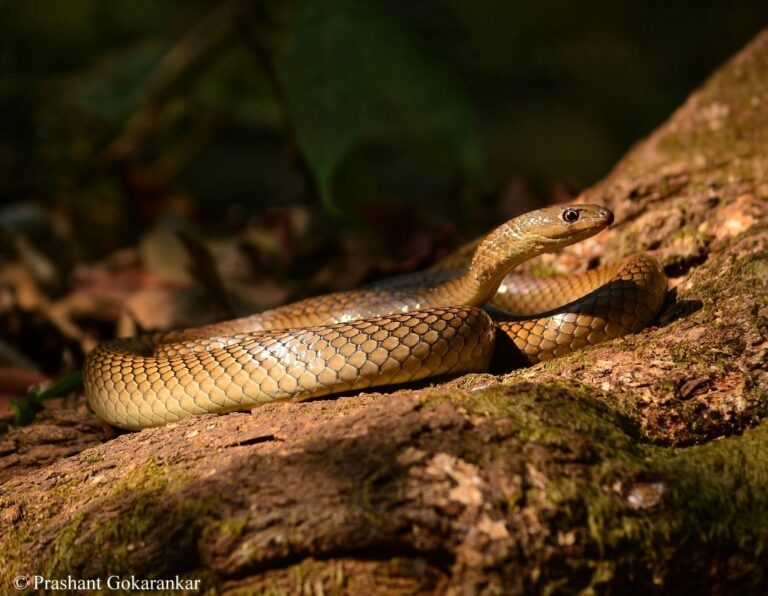
Photographer: Prashant Gokarankar
Stout Sand Snake
- Marathi name: Jad Reti Sarp.
- Distribution: Some parts of Maharashtra and Gujarat.
- Habitat: Terrestrial and arboreal.
- Food: Mostly lizards and skinks.
- Characteristics:
- Semi-Venomous.

Photographer: Tushar Bhoir
Beddome’s Cat Snake
- Marathi name: Beddomecha Manjarya Saap.
- Distribution: Western Ghats and Orissa.
- Habitat: Tree hollows, bamboo groves and under rocks.
- Food: Lizards, garden lizards and small birds.
- Characteristics:
- Semi-Venomous.

Photographer: Prashant Gokarankar
Phipson’s Shieldtail
- Marathi name: Khaparkhavalya
- Distribution: Western Ghats (Maharashtra).
- Habitat: Lives underground.
- Food:
- Characteristics: Mostly nocturnal, sometimes seen during the day.
- Non-Venomous.
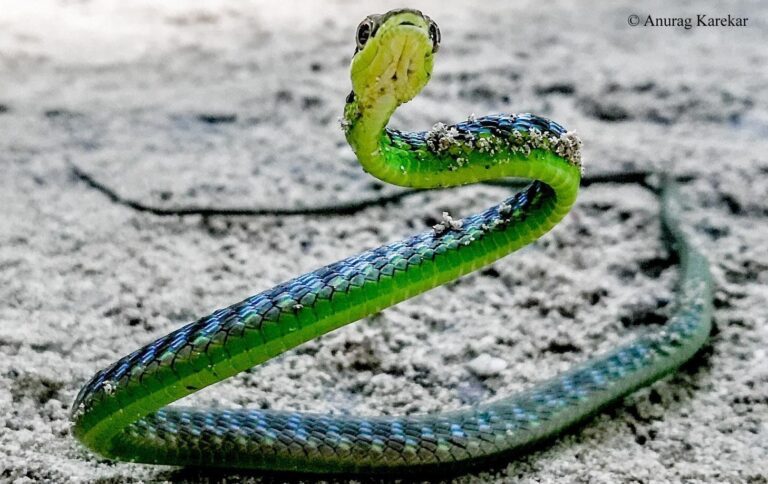
Photographer: Anurag Karekar
Andaman Green Bronzeback Tree Snake
- Marathi name: Andaman Green Bronzeback Tree Snake
- Distribution: Found only in open and dense forests of Andaman and Little Andaman Islands.
- Habitat: Arboreal and a sunshine loving snake, active in low bushes and trees at all hours of the day, less active in dull weather.
- Food: Feeds actively on geckos, other lizards, frogs, small birds etc.
- Characteristics: Diurnal
- Non-Venomous.

Photographer: Tushar Bhoir
Mahabaleshwar Shieldtail
- Marathi name: Mahabaleshwari Khaparkhavalya.
- Distribution: Mahabaleshwar (Maharashtra).
- Habitat: Lives underground.
- Food: Earthworms
- Characteristics: Nocturnal
- Non-Venomous.

Photographer: Dhananjay Rawool
Ornate Flying Snake
- Marathi name: Udta Sonsarp.
- Distribution: Hilly forests of Western Ghats. Also found in Bihar, Orissa, west Bengal and North Eastern states. It has also been sighted in the Chandrapur and Gadchiroli districts Maharashtra.
- Habitat: Mainly arboreal, it prefers to live in trees.
- Food: Frogs, geckos, lizards, bats and small birds.
- Characteristics: It is active in the day
- Semi-Venomous.

Photographer: Prashant Gokarankar
Indian Rat snake
- Marathi name: Dhaman
- Distribution: All over India except Kashmir.
- Habitat: All types of habitats viz. Urban, rural, forests, arid, coastal, marshy, etc. It is found residing in anthills or rat burrows.
- Food: Also feeds on toads, frogs, lizards, geckos, small birds, other snakes, squirrels and bats.
- Characteristics: Diurnal
- Non-Venomous.

Photographer: Prashant Gokarankar
Russell’s Viper
- Marathi name: Ghonas
- Distribution: All over India except Jammu & Kashmir.
- Habitat: Urban and rural human habitations, coastal areas, forests, paddy fields, arid shrubbery and rocky areas. Prefers to reside in anthills and rat holes.
- Food: Rats and small mammals.
- Characteristics: Mainly nocturnal
- Venomous
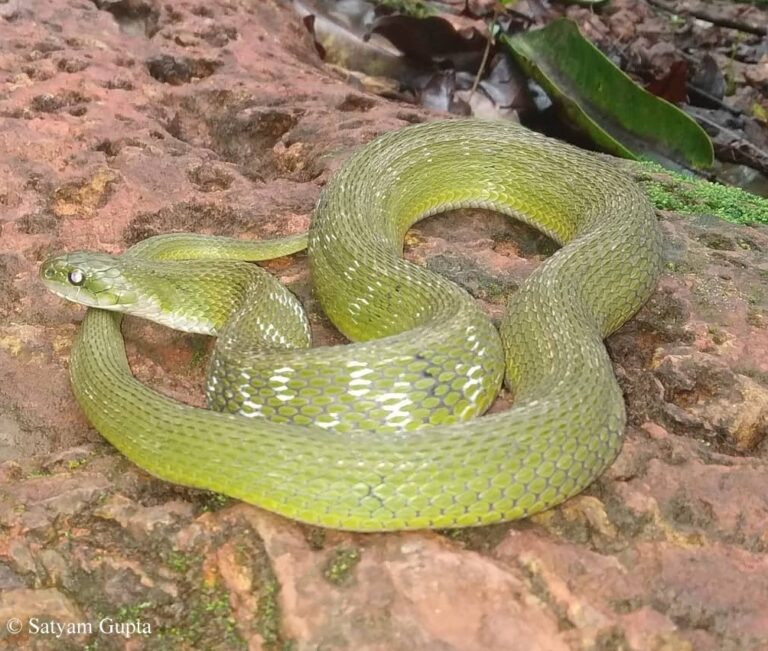
Photographer: Satyam Gupta
Green Keelback
- Marathi name: Gavtya
- Distribution: Central and Southern India Except the east coast
- Habitat: Dense Forest, grassland, in populated villages and cities.
- Food: Mostly toads.
- Characteristics: Nocturnal
- Non-Venomous
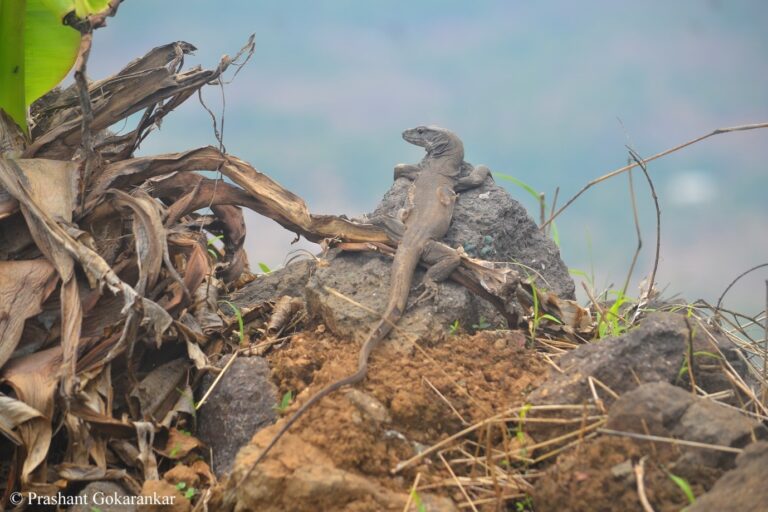
Photographer: Prashant Gokarankar
Bengal Monitor Lizard
Habitat: Bengal monitors are found both in dry semiarid desert habitats to floodplains, scrubland, and moist forest. They are also often found in agricultural areas.
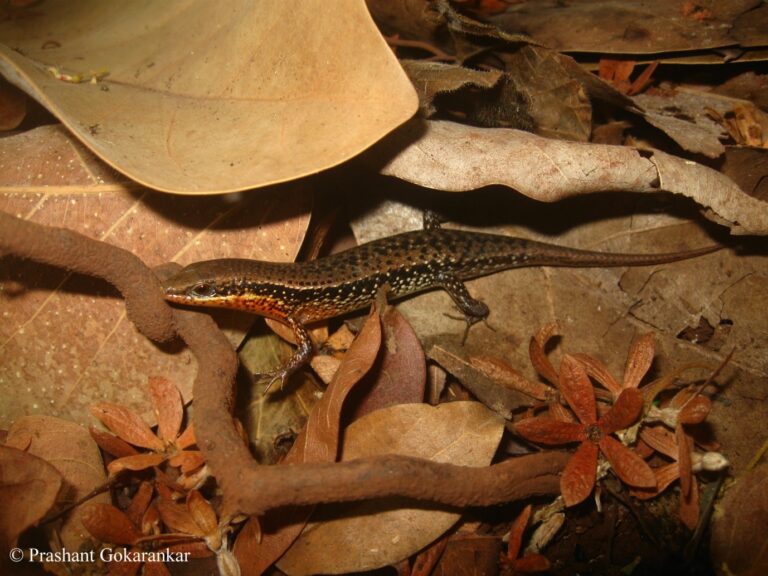
Photographer: Prashant Gokarankar
Bronze Grass Skink
Habitat: It lives in both deciduous and evergreen forests, in plantations, among leaf litter, in grasslands, and in rocky areas with scattered trees, at altitudes up to about 1,500 m (5,000 ft).
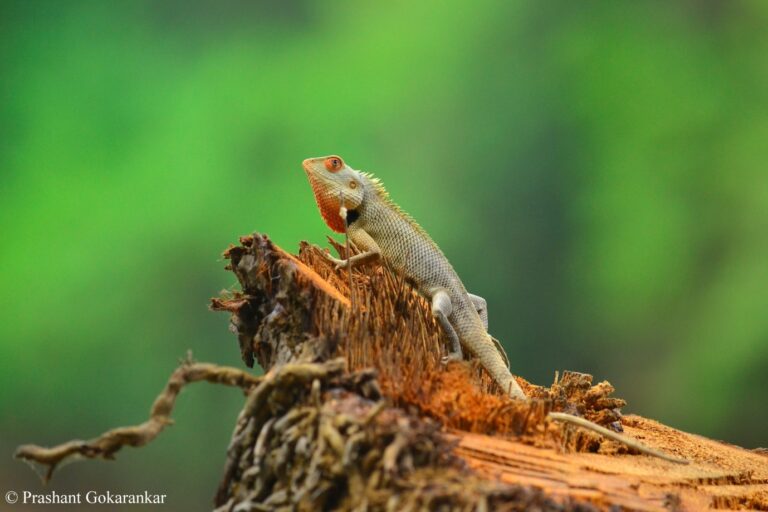
Photographer: Prashant Gokarankar
Common Garden Lizard
Habitat: It is found in gardens and forests of India, Sri Lanka, Southeast Asia

Photographer: Prashant Gokarankar
Kashmir Rock Agama
Habitat: Seen on a mountain.
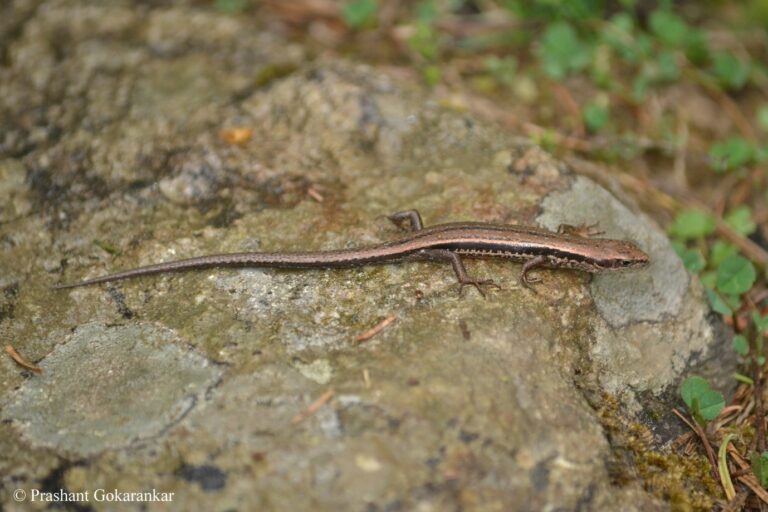
Photographer: Prashant Gokarankar
Sikkim Ground Skink

Photographer: Naman Kazi
Common Keeled Skink
Habitat: From rain forests and deserts to scrub forests and parks and gardens of houses and cities.

Photographer: Tushar Bhoir
Sahyadri Forest Calotes
Habitat: Found in many types of forested land. Prefers dense and bushy hill forest. A skillful and an adept climber, it moves over trees and bushes rather swiftly.
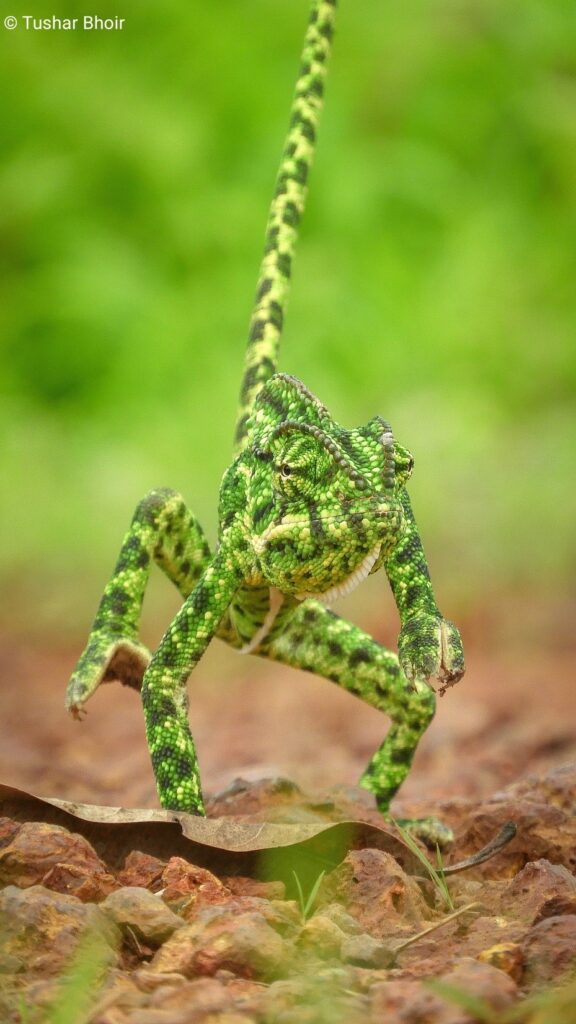
Photographer: Tushar Bhoir
Indian Chameleon
Habitat: live in a variety of habitats, from rainforests and lowlands to deserts, semi-deserts, scrub savannas, and even mountains. Many inhabit trees, but some live in grass or on small bushes, fallen leaves, or dry branches.
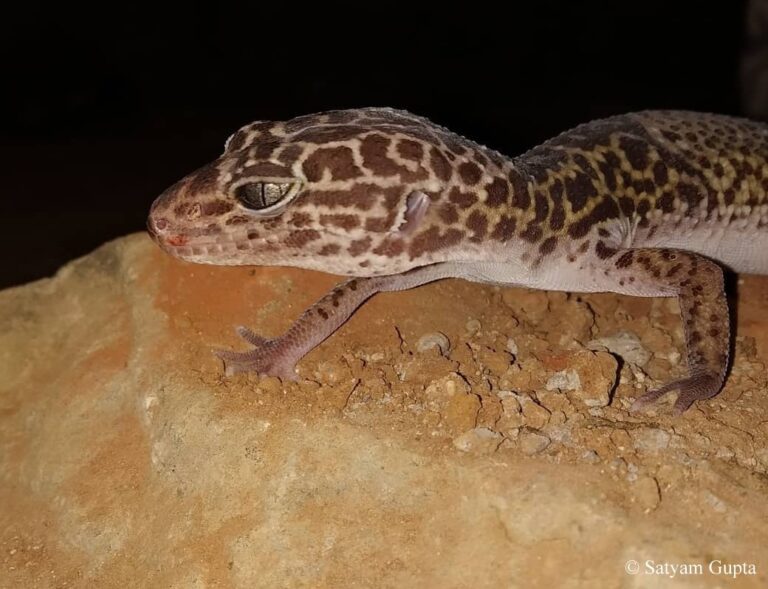
Photographer: Satyam Gupta
Western Leopard gecko
Habitat: Found in forest hill tracts, shrubs boulders and scrubland
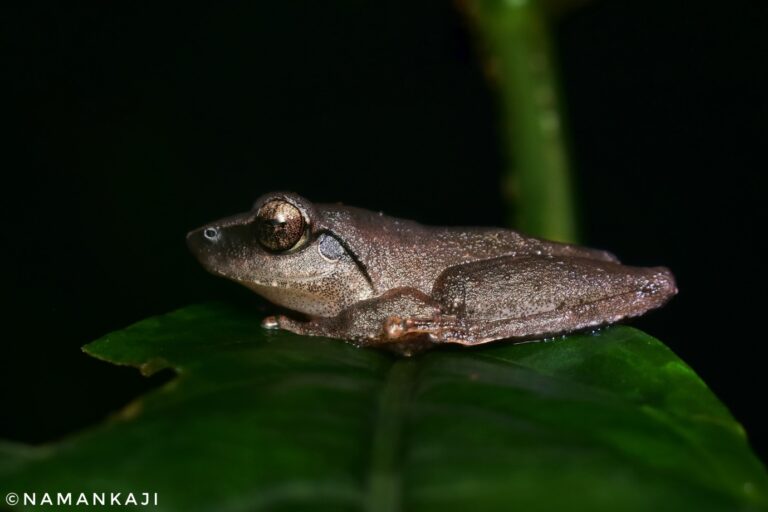
Photographer: Naman Kazi
Amboli Bush Frog
Habitat: Amboli bush frog is a rare shrub frog species endemic to the Western Ghats (India). It is found in Amboli (the type locality) and Amba in Maharashtra and in Castle Rock, Londa, Jog Falls-Mavingundi, and Kudremukh-Malleshwaram in Karnataka.

Photographer: Naman Kazi
Cnemaspis sp.
Habitat: The gecko is currently known from only one locality in Andhra Pradesh‘s Nellore district, in the Velikonda Range of the Eastern Ghats. The locality is near a stream in a dry evergreen forest at an elevation of 200 m above sea level.
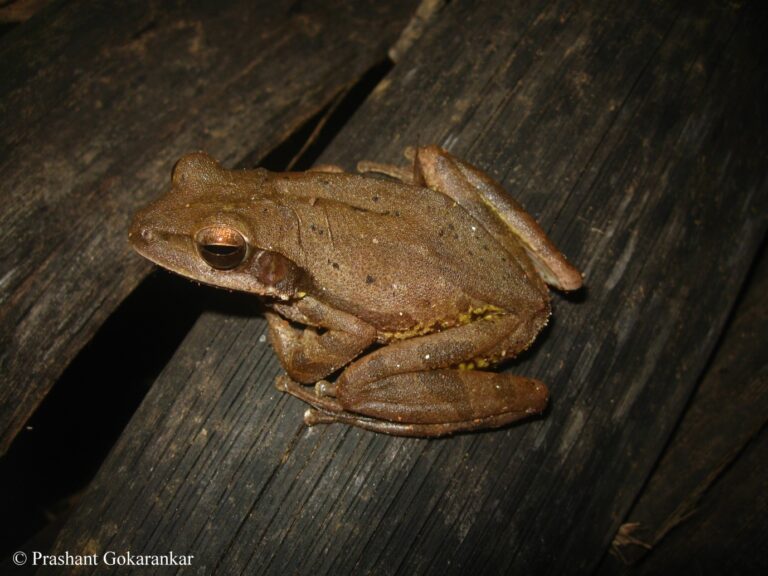
Photographer: Prashant Goakarankar
Indian Tree Frog
Habitat: On shrubs and walls – almost all habitats from forest to human settlements. Elevation up to 1500m.

Photographer: Naman Kazi
Northen Dancing Frog
Habitat: Typical habitats include high altitude shola forests, wet evergreen forests, Myristica swamps, and secondary forests.
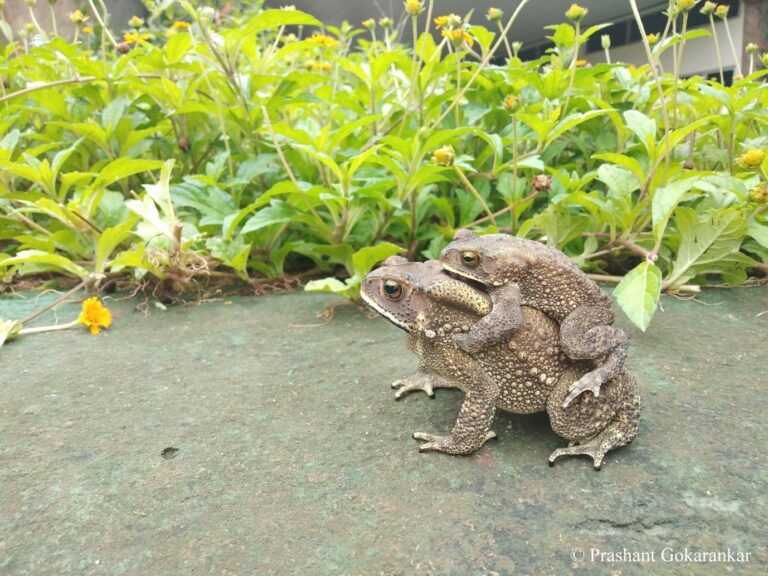
Photographer: Prashant Gokarankar
Common Indian Toad
Habitat: On land – Garden, water tanks, moist places, leaf litter, stream sides, rocks. Elevation up to 2500 m.

Photographer: Prashant Gokarankar
Wide-spread Fungoid Frog
Habitat: Usually found near human habitation and in agricultural fields. It is also found on the forest floor and near ephemeral or permanent water bodies, but mainly during breeding season.
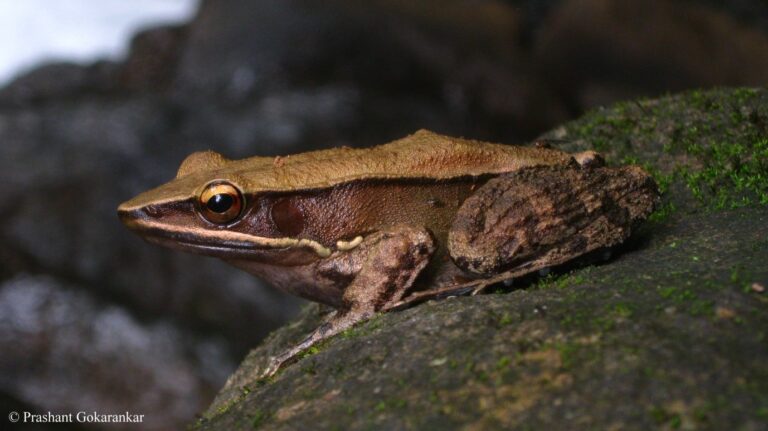
Photographer: Prashant Gokarankar
Maharashtra Golden-backed Frog
Habitat: Found in southern Maharashtra.
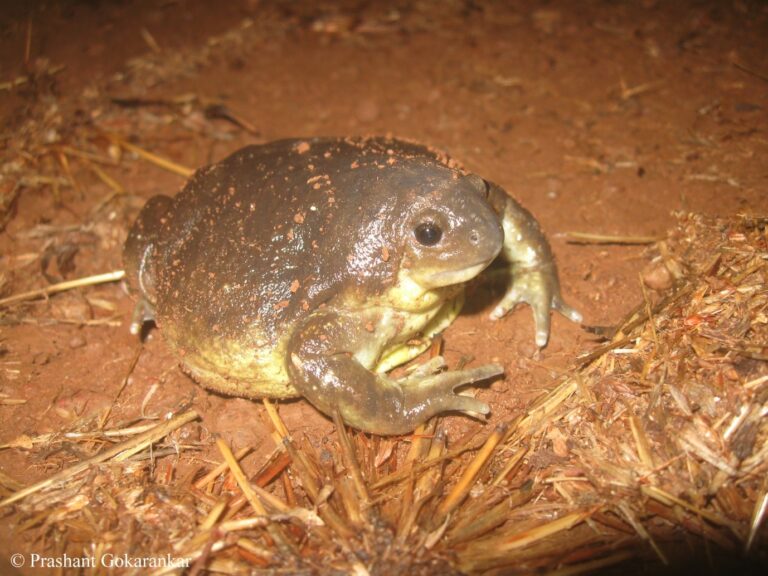
Photographer: Prashant Gokarankar
Indian Balloon Frog
Habitat: Found in forest, inland wetland, and both artificial terrestrial and aquatic areas below 600 m in elevation

Photographer: Prashant Gokarankar
Indian Bull Frog
Habitat: Near water bodies, on land – streams, lakes, pools, agriculture fields and human settlements. Elevation 25 m – 2000 m.
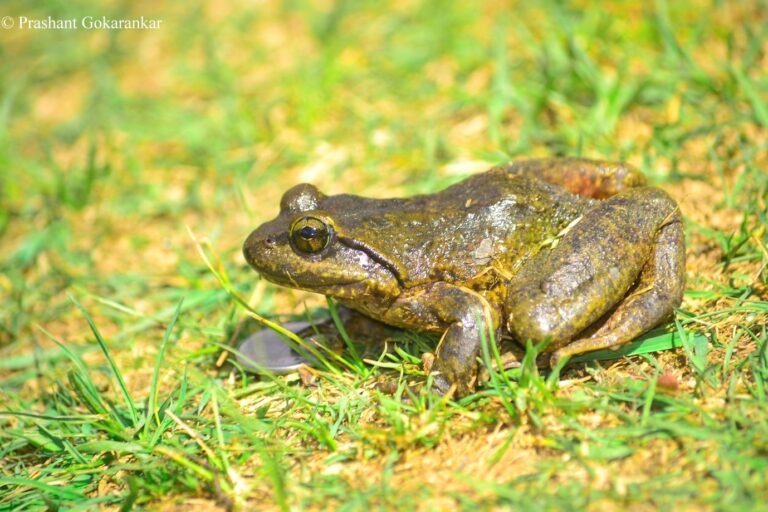
Photographer: Prashant Gokarankar
Murree Frog
Habitat: Its natural habitats are high-altitude Rivers, springs, and other running water in open forest and grassland habitats.

Photographer: Prashant Gokarankar
Sahyadri marbled balloon frog
Habitat: Pools, puddles, streams in forest, human settlements, tree holes, tree bases and termite mounds in dry deciduous to moist evergreen forest.



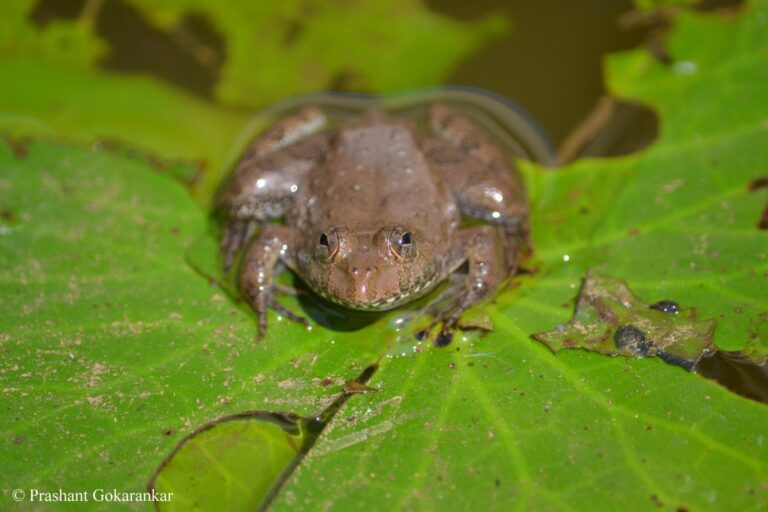
Amratim photografi….. khupch chan mahiti………. khup chhan 👏👏👌👌
सुपर
मस्तच
Very visible and attractive photography, specially by Prashant Gokarankar and interesting information from Mahim Nature Park.
Nice initiative.
At least this way we can connect back to nature & enjoy its blessings in all life forms.
Expecting more & more such things.
फोटो खूपच छान टिपलेलर आहेत आणि माहितीही खूप छान
खूप छान! 🙂
Keep it up 👍